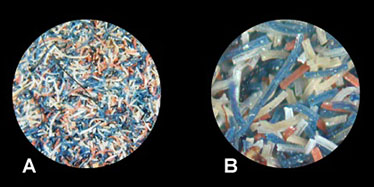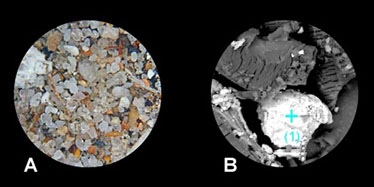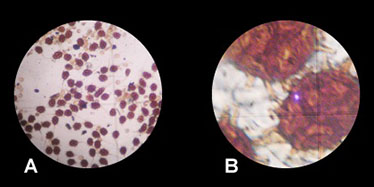Analysing particles
Air particles may be inorganic, like the mineral dusts common near roads, quarries and construction activities, or may consist of organic materials such as moulds or fungus.
We sometimes need to examine and analyse particles collected from air samples to determine their composition and any risks to human health.
Techniques involve a wide range of sophisticated analytical methods, including:
- both conventional and electron microscopes
- chemical analysis.
Example 1
Examining a sample with a microscope at 2 magnifications (A and B) indicates that it is an organic fibre. Fourier transform infrared spectroscopy (FTIR) analysis confirmed it as polypropylene fibre.

Example 2
A coarse fraction of a sample (A) was further analysed using a scanning electron microscope with an energy dispersive X-ray analyser (SEM-EDS).

The x-ray spectrum of an individual particle (B) shows a profile typical of feldspar, a common aluminosilicate mineral.

Example 3
Examining a sample of black dust collected on a paper wipe with a microscope at different magnifications (A and B) revealed Ulocladium and Polythrincium fungal spores, common in moist climates.
